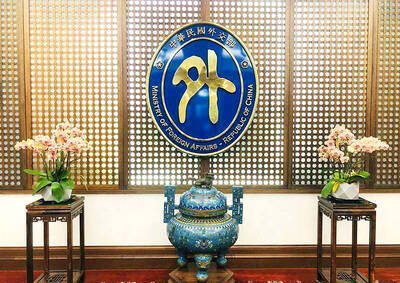After two years of negotiations, rice grown in Taiwan has finally passed Beijing’s quarantine requirements and been given the greenlight for export to China, the Council of Agriculture (COA) said yesterday.
The council’s Animal and Plant Health Inspection and Quarantine Bureau said it began negotiating with China’s General Administration of Quality Supervision, Inspection and Quarantine in late 2010, and that after having an inspection team from China visit Taiwan’s rice production region this month, the two sides reached an agreement.
The two sides agreed that a management standard for rice processing factories must be registered at the council’s Agriculture and Food Agency, while the rice must be inspected and certified by the bureau before it can be exported, the council said.
In recent years, China has become Taiwan’s second-largest export market for agricultural products, the council said, adding that the maximum amount of rice exported to China for the second half of this year would be 50,000 tonnes, though adjustments would be made according to circumstances.
Maintaining an adequate supply to meet Taiwan’s domestic demand for rice would still be the first priority, the council added.
Saying that the nation produces high-quality rice, the council added that it would work to help Taiwanese farmers strengthen their branding and marketing strategies in an effort to differentiate products from Taiwan from their lower-priced counterparts on the Chinese market.
In related developments, the Kaohsuing District Agricultural Research and Extension Station said a Japanese rice company yesterday signed a contract to procure 500 tonnes of rice strain Rice Kaohsiung No. 145 this year.
Station director Huang Te-chang (黃德昌) said the strain was cultivated and promoted by the station in 2004 and has won many quality competitions.

The Executive Yuan yesterday announced that registration for a one-time universal NT$10,000 cash handout to help people in Taiwan survive US tariffs and inflation would start on Nov. 5, with payouts available as early as Nov. 12. Who is eligible for the handout? Registered Taiwanese nationals are eligible, including those born in Taiwan before April 30 next year with a birth certificate. Non-registered nationals with residence permits, foreign permanent residents and foreign spouses of Taiwanese citizens with residence permits also qualify for the handouts. For people who meet the eligibility requirements, but passed away between yesterday and April 30 next year, surviving family members

The German city of Hamburg on Oct. 14 named a bridge “Kaohsiung-Brucke” after the Taiwanese city of Kaohsiung. The footbridge, formerly known as F566, is to the east of the Speicherstadt, the world’s largest warehouse district, and connects the Dar-es-Salaam-Platz to the Brooktorpromenade near the Port of Hamburg on the Elbe River. Timo Fischer, a Free Democratic Party member of the Hamburg-Mitte District Assembly, in May last year proposed the name change with support from members of the Social Democratic Party and the Christian Democratic Union. Kaohsiung and Hamburg in 1999 inked a sister city agreement, but despite more than a quarter-century of

Taiwanese officials are courting podcasters and influencers aligned with US President Donald Trump as they grow more worried the US leader could undermine Taiwanese interests in talks with China, people familiar with the matter said. Trump has said Taiwan would likely be on the agenda when he is expected to meet Chinese President Xi Jinping (習近平) next week in a bid to resolve persistent trade tensions. China has asked the White House to officially declare it “opposes” Taiwanese independence, Bloomberg reported last month, a concession that would mark a major diplomatic win for Beijing. President William Lai (賴清德) and his top officials

The Ministry of Foreign Affairs (MOFA) yesterday expressed “grave concerns” after Singaporean Prime Minister Lawrence Wong (黃循財) reiterated the city-state’s opposition to “Taiwanese independence” during a meeting with Chinese Premier Li Qiang (李強). In Singapore on Saturday, Wong and Li discussed cross-strait developments, the Singaporean Ministry of Foreign Affairs said in a statement. “Prime Minister Wong reiterated that Singapore has a clear and consistent ‘one China’ policy and is opposed to Taiwan independence,” it said. MOFA responded that it is an objective fact and a common understanding shared by many that the Republic of China (ROC) is an independent, sovereign nation, with world-leading